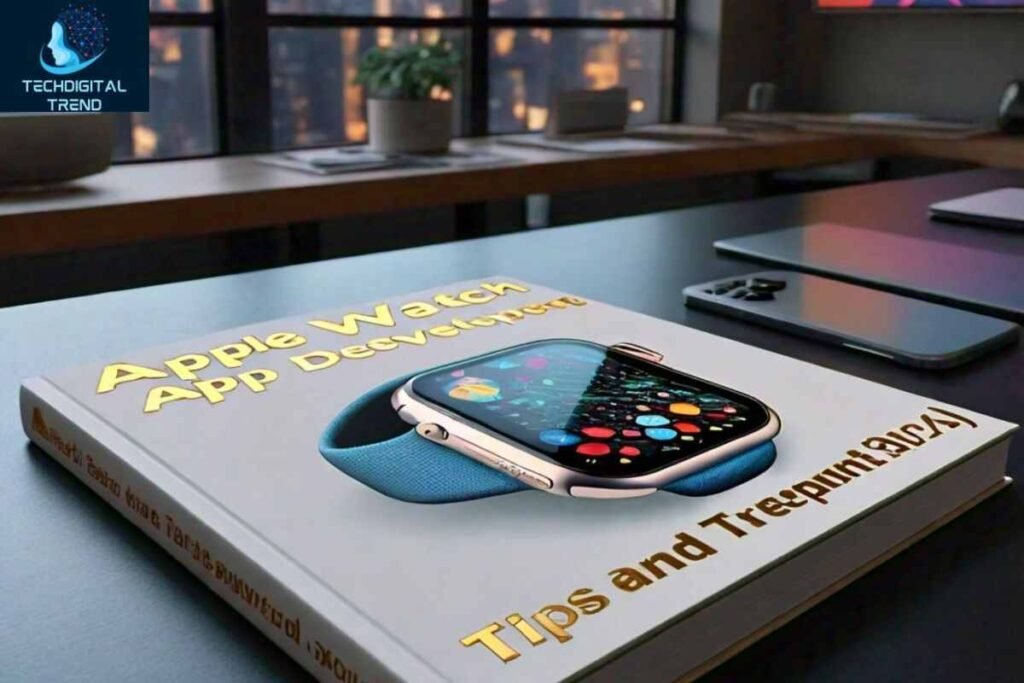Table of Contents
ToggleApple Watch App
In this comprehensive guide, we’ll take you through the process of building Apple Watch app, covering the latest tools, frameworks, and best practices. From setting up your development environment to designing your app’s user interface and building its features, we’ll cover everything you need to know to create a successful Apple Watch app.
With the increasing popularity of the Apple Watch, creating apps for this platform has become an exciting opportunity for developers. Whether you’re a seasoned developer or just starting, building an Apple Watch app can be a fun and rewarding experience.
Setting Up Your Development Environment
Before you start building your Apple Watch app, you need to set up your development environment. This includes:
- Installing Xcode
- Xcode is the official Integrated Development Environment (IDE) for Apple Watch app development. To install Xcode, follow these steps:
- Go to the Mac App Store
- Search for Xcode
- Click “Get” to download and install Xcode
Setting Up Your Apple Watch Simulator
The Apple Watch simulator allows you to test and run your app on a virtual Apple Watch. To set up your Apple Watch simulator, follow these steps:
- Open Xcode
- Go to “Window” > “Devices”
- Click the “+” button to add a new device
- Choose “Apple Watch” from the device options list.
- Choose the desired watch size and OS version
Creating a New Apple Watch App Project
To create a new Apple Watch app project, follow these steps:
- Open Xcode
- Go to “File” > “New” > “Project”
- Select “WatchOS” from the list of available platforms
- Choose the “Single View App” template
- Enter your app’s name and other details
- Click “Next” to create your project
Designing Your App’s User Interface
The user interface of your Apple Watch app is crucial to its success. A well-designed interface can make your app intuitive and easy to use, while a poorly designed interface can lead to confusion and frustration.
Understanding Apple Watch Design Principles
Before you start designing your app’s interface, it’s important to understand the design principles that Apple has established for the Apple Watch. These principles include:
- Clarity: Use clear and simple language, and avoid clutter and unnecessary elements.
- Flexibility: Design your app to work on different watch sizes and orientations.
- Feedback: Provide feedback to the user after they interact with your app.
- Consistency: Use consistent design elements throughout your app.
Designing Your App’s Layout
When designing your app’s layout, consider the following:
- Use a simple and intuitive layout: Avoid complex layouts that can be difficult to navigate.
- Use the entire screen: Make sure to use the entire screen real estate to provide an immersive experience.
- Use WatchOS-specific design elements: Take advantage of WatchOS-specific design elements, such as the Digital Crown and Force Touch.
Designing Your App’s Visuals
When designing your app’s visuals, consider the following:
- Use high-quality images: Use high-quality images that are optimized for the Apple Watch’s screen resolution.
- Use consistent color scheme: Use a consistent color scheme throughout your app to provide a cohesive look and feel.
- Use WatchOS-specific design elements: Take advantage of WatchOS-specific design elements, such as San Francisco font and Apple Watch-specific icons.
Building Your App’s Features
Now that you have designed your app’s user interface, it’s time to start building its features. In this section, we’ll cover some of the key features you can build into your Apple Watch app.
Notifications and Alerts
Notifications and alerts are essential features of any Apple Watch app. They allow you to keep your users informed and engaged with your app. To build notifications and alerts into your app, you can use the WatchOS notification framework.
Health and Fitness Tracking
The Apple Watch is a popular device for tracking health and fitness data. If your app is related to health and fitness, you can use the WatchOS HealthKit framework to track user data, such as steps taken, calories burned, and workouts completed.
Integration with Other Apple Devices
One of the key benefits of building an Apple Watch app is the ability to integrate with other Apple devices, such as the iPhone and Mac. To integrate your app with other Apple devices, you can use WatchOS frameworks, such as Watch Connectivity and WatchKit.
Custom Complications
Custom complications allow you to provide users with quick access to your app’s data and functionality. To build custom complications into your app, you can use the WatchOS Complication framework.
Third-Party Integrations
Third-party integrations allow you to enhance your app’s functionality by integrating with other services and apps. To integrate third-party services into your app, you can use APIs and SDKs provided by the service providers.
Testing and Debugging Your App
During the app development process, testing and debugging are essential processes. They guarantee that your app operates as planned and is dependable, stable, and stable.
Testing Your App
To test your app, you can use the following methods:
- Simulator testing: Test your app on the Apple Watch simulator to ensure it works as expected.
- Physical device testing: Test your app on a physical Apple Watch device to ensure it works as expected in a real-world setting.
- User testing: Test your app with real users to gather feedback and identify areas for improvement.
Debugging Your App
To debug your app, you can use the following tools:
- Xcode debugger: Use the Xcode debugger to identify and fix errors in your code.
- Console logs: Use console logs to identify issues and debug your app.
- WatchOS debugging tools: Use WatchOS-specific debugging tools, such as the WatchOS debugger and the WatchOS console.
Common Issues and Solutions
Here are some common issues and solutions to help you debug your app:
- App crashes: Check for errors in your code, and use the Xcode debugger to identify the cause of the crash.
- App freezes: Check for infinite loops or other issues that may be causing the app to freeze.
- App doesn’t install: Check for issues with your app’s provisioning profile or certificate.
Conclusion
Building an Apple Watch app is an exciting project that can help you develop your skills as a developer and create a useful tool for users. In this guide, we’ve covered the key steps involved in building an Apple Watch app, from setting up your development environment to testing and debugging your app.
By following the steps outlined in this guide, you can create a high-quality Apple Watch app that provides a great user experience. Remember to keep your app simple, intuitive, and visually appealing, and to test and debug it thoroughly to ensure it is reliable and stable.
Some final tips to keep in mind:
- Keep your app focused on a specific task or functionality
- Use the Apple Watch’s unique features, such as the Digital Crown and Force Touch
- Test your app on different watch sizes and orientations
- Use the Xcode debugger and console logs to identify and fix errors
- Keep your app up to date with the latest WatchOS features and best practices
Open this link: Tap to here















